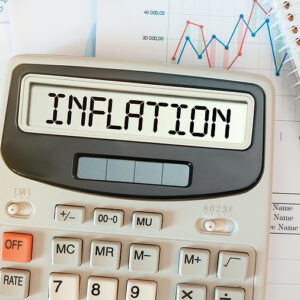Since 2012, monthly consumer inflation has averaged (on an annualized basis) less than two percent. Prior to this year, the peak was 7.2 percent in August 2012. The last three months have shattered that record. According to the Bureau of Labor Statistics, consumer inflation was 7.7 percent in March, 9.6 percent in April, and 8.0 percent in May.
The last time we experienced three consecutive months of inflation above 7 percent was July 2008 – in the midst of the Great Recession.
The usual cure for inflation is to slow the expansion of the money supply. That comes with the usual side effect of higher interest rates. But higher interest rates are a much bigger problem now than they have been in the past due to the burgeoning federal debt. The federal debt is currently over $28 trillion. At that level, each one percentage point rise in interest rates increases the federal government’s interest expense by more than a quarter-trillion dollars.
The debt has become so large that it is starting to make it difficult for the Federal Reserve to control inflation. Slowing money supply growth might be good for the economy in that it tempers inflation, but it’s bad for the federal government because the subsequent rise in interest rates increases the budget deficit.
We’re not looking at hyperinflation. “Hyperinflation” doesn’t have a technical definition, but economists typically use it to describe inflation rates that range from “gargantuan” to “unbelievable” – think inflation rates in the thousands or even millions percent.
Consider an extreme situation. Suppose the federal government continues to run trillion-dollar deficits indefinitely. Suppose further that the Federal Reserve completely monetizes those deficits. That is, suppose the Federal Reserve prints the money necessary to finance those deficits. The money supply is currently around $20 trillion. Monetizing an additional $1 trillion per year would mean increasing the money supply 5 percent faster than otherwise. So if background inflation were typically 3 percent, that means (making very broad assumptions about everything else staying relatively constant) we could expect 8 percent inflation on an ongoing basis.
Given the past couple of years, a mere $1 trillion deficit may be wishful thinking. If the government maintains a consistent $2 trillion deficit and the Fed monetizes it, we’ll be looking at sustained 13 percent inflation.
Even in this extreme case, we’re not close to hyperinflation.
But, something else would be happening. We’d be setting a precedent. Politicians have an incentive to push deficit spending as far as voters are willing to let them. After a few years of one or two trillion dollar deficits, voters will become inured. Then we’ll see politicians push for two or four trillion dollar deficits. And when voters become comfortable with those, politicians will push further still.
We see the seeds of this already in the intellectually bankrupt Modern Monetary Theory. MMT boils down to a simple policy prescription: politicians should feel free to print as much money as they want. That’s a recipe for hyperinflation.

